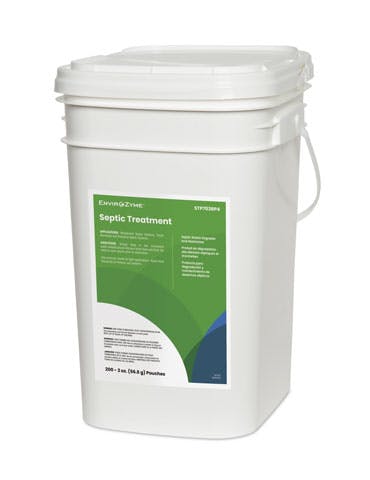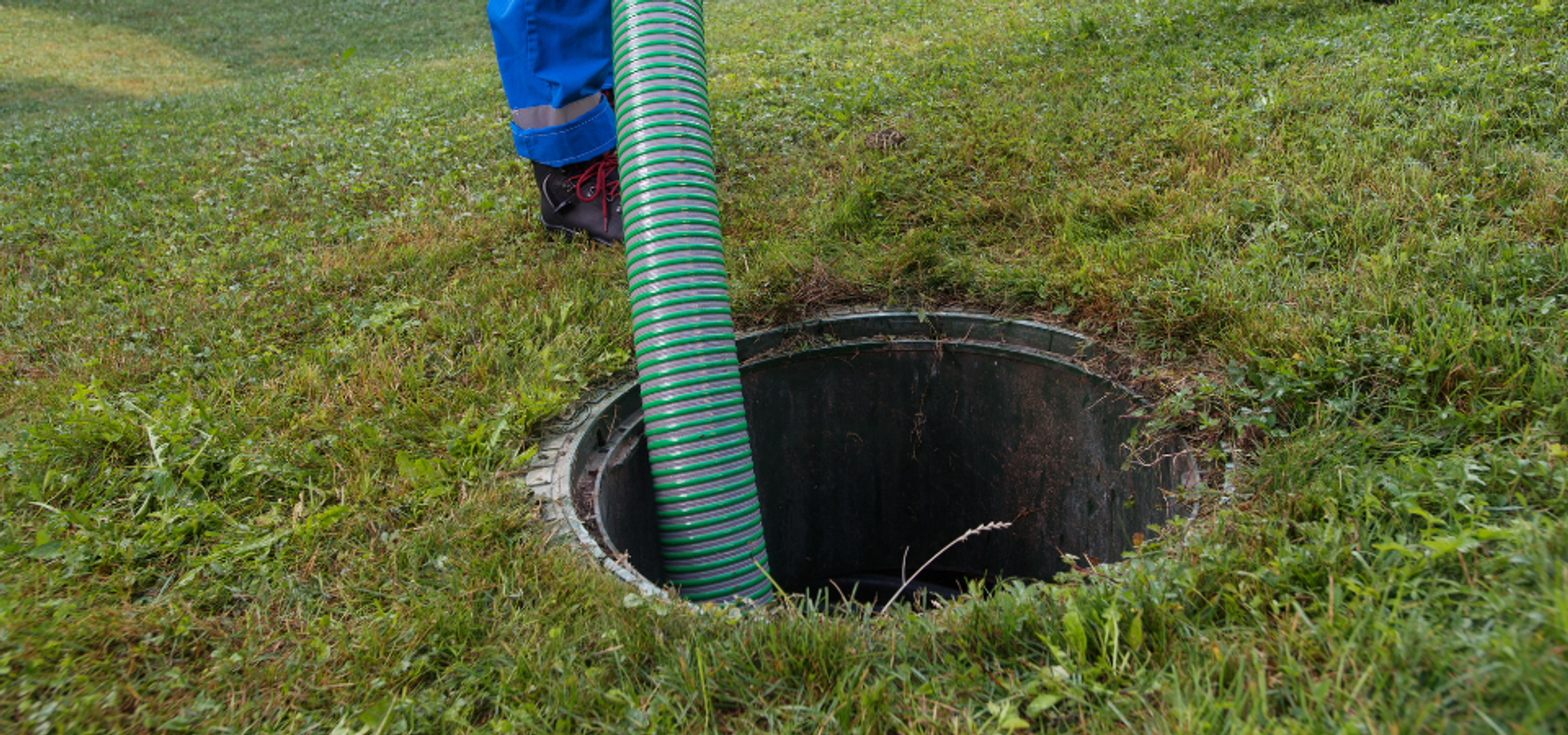
Experimenting with Septic System Treatment
Background
Septic systems are used to treat wastewater from households or facilities as opposed to relying on a municipal wastewater system. A septic system consists of the septic tank and a series of pipes that drain the wastewater from a building through the tank and to the leach field. A septic system needs to be properly maintained and healthy so it can function efficiently over its entire lifespan of 15 to 40 years, and the leach field it drains into can reach its life expectancy of over 50 years.
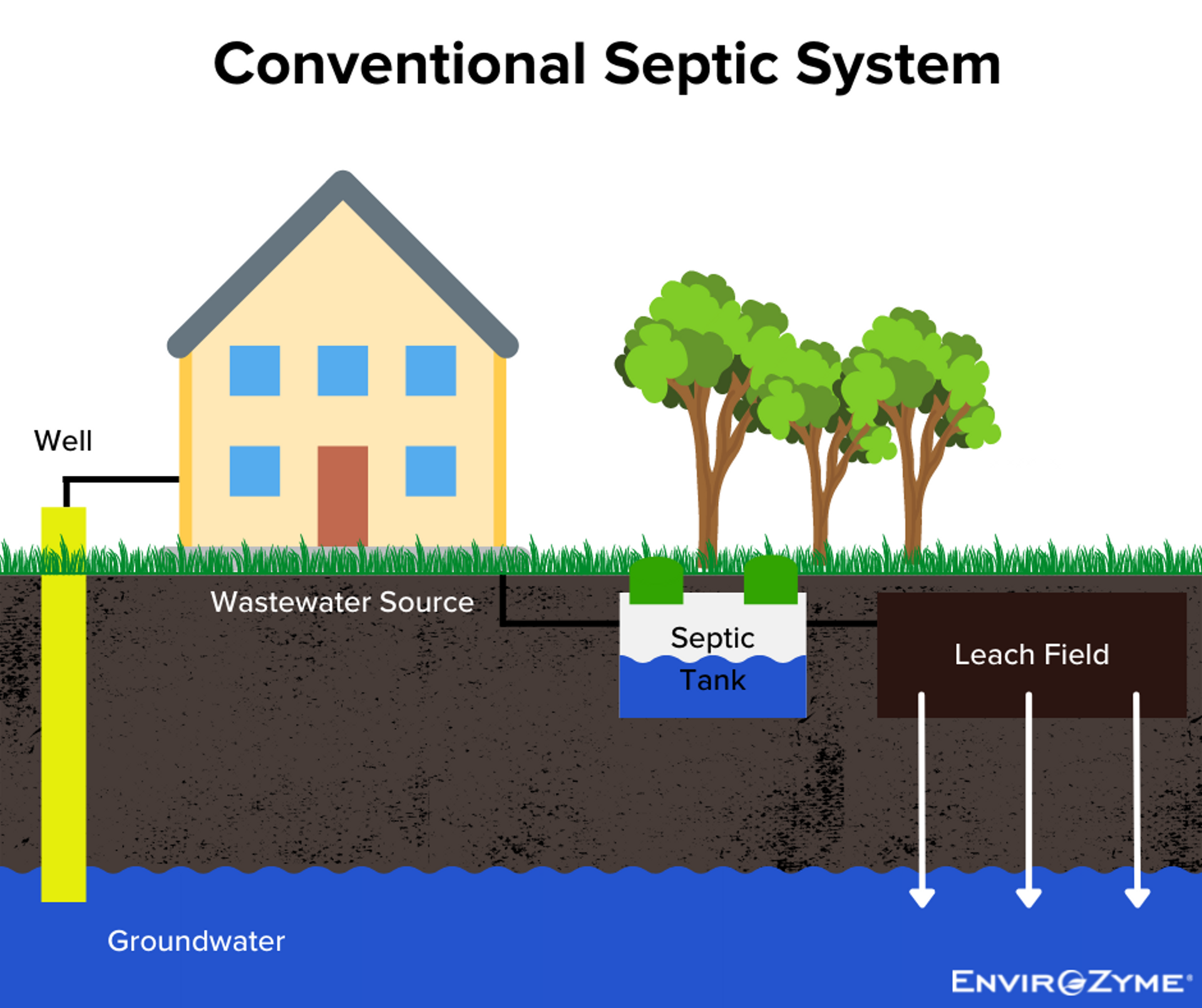
Bioaugmentation can be used to improve performance in septic systems. Although pumping out the septic tank regularly helps the system’s efficiency, bioaugmentation can assist with specific areas where pumps lack. For example, sludge can become compacted at the bottom of a septic tank, which makes it challenging to pump out. It can easily build up over time and take over some of the tank’s needed capacity. It can cause a clog and lead to additional and costly maintenance. Scum floats to the top of a septic tank and is formed by oil, grease, and fats, taking up space needed for more waste. Bioaugmentation is needed to break down organic matter and floating solids in the septic system.
EnviroZyme® conducted an experiment using bioaugmentation to increase the overall bacteria count, thereby decreasing organic matter in the effluent. The effluent is clarified wastewater left over in the septic tank after the sludge has settled to the bottom. Organic matter is considered a pollutant in wastewater by the Environmental Protection Agency (EPA). If a septic system is improperly treated, dangerous amounts of phosphorus and nitrogen from wastewater can proliferate and be released into the ground. Increasing the plate count will help the consumption of organic matter and result in a healthier septic system.
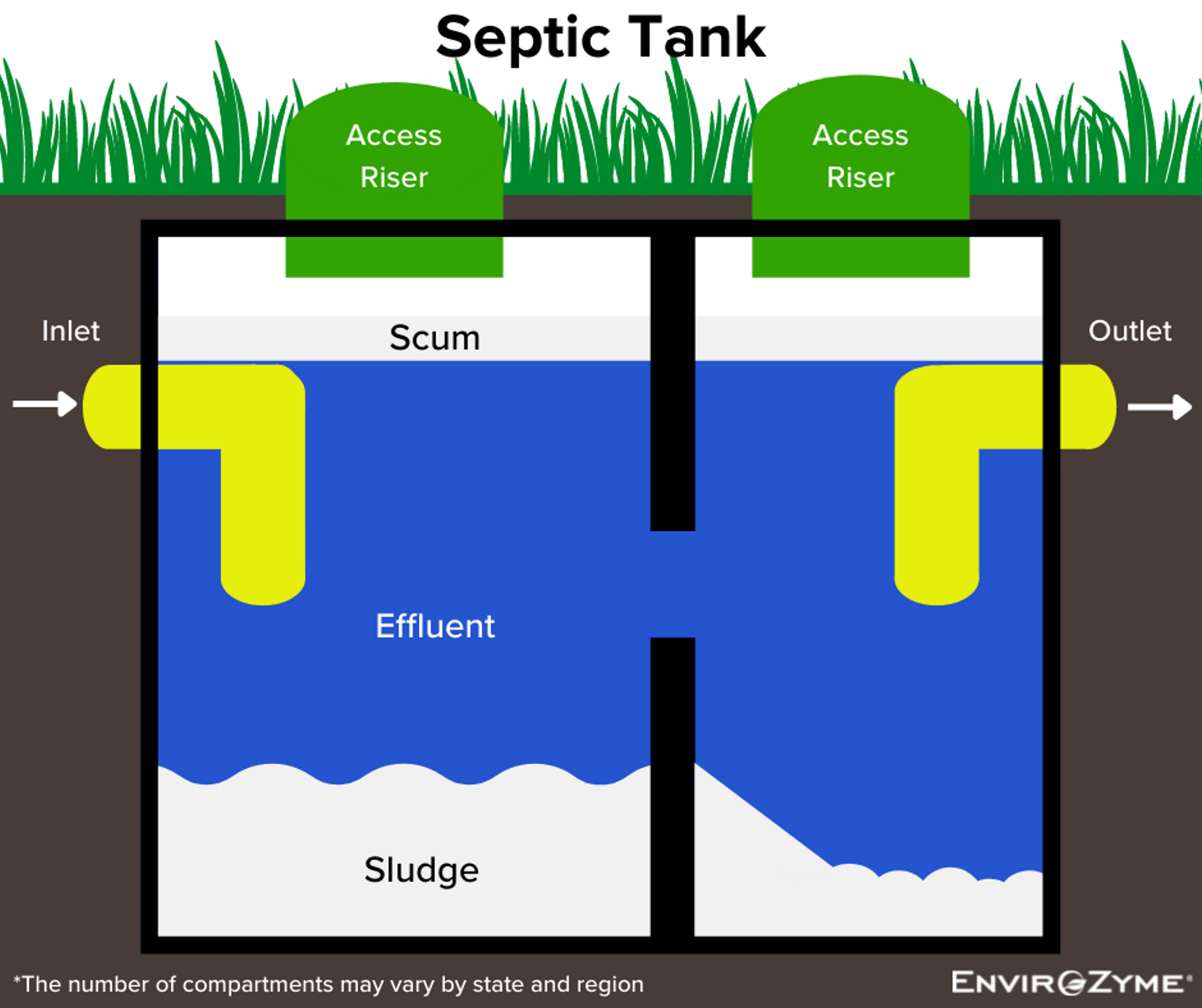
Treatment Plan
The experiment started with two 10-gallon tanks with water that was circulated without adding aeration. Common foods were added to both tanks, specifically 1 liter of olive oil to represent the fats, oils, and greases that are usually found in septic tanks. The olive oil floated to the top of the tank to represent a scum level. Other foods were added to represent a sludge layer at the bottom of the tank. One tank was treated with a single dose of EnviroZyme’s Septic Treatment, while the other was left untreated.
A decrease in dissolved oxygen before treatment confirmed the presence of environmental bacterial strains in both tanks. A dose of Septic Treatment was added once a month as directed. The team sampled the tanks weekly to observe the plate count and organic material.
Results
Throughout the experiment, the team observed that the plate count was 50% higher in the treated tank. The organic material dropped by almost 50%. This confirms that adding bacteria to a static system with a limited food source increases the number of colonies and reduces the organic matter in the water. The bacteria feed off organic matter in the water, reducing the pollutants and overall improving the septic system. They also consume the solids found in the scum and sludge layers in the septic tanks.
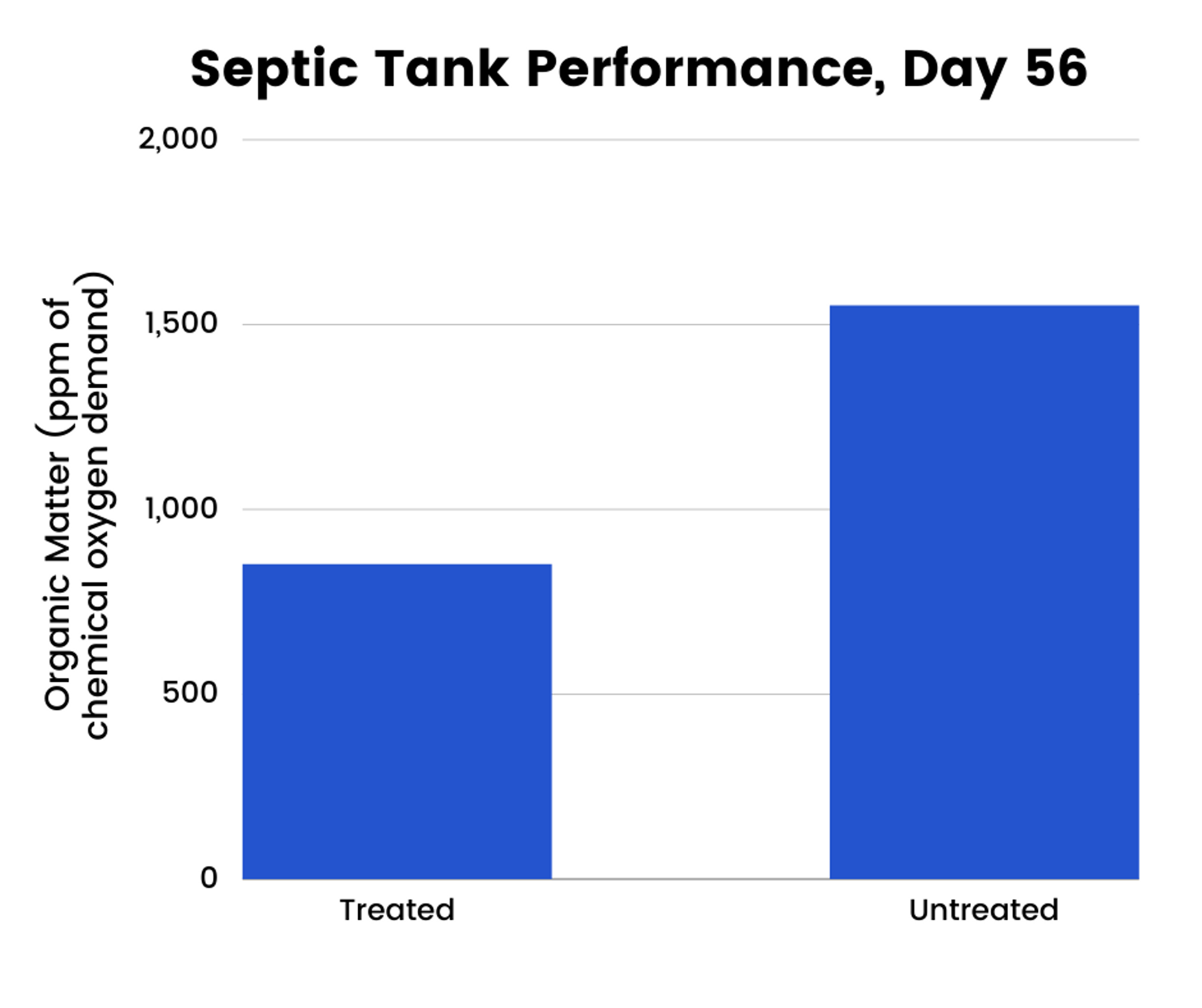
According to the graph on the right, the treated tank contained just under 900 ppm of organic matter on day 56 of the experiment, while the untreated contained around 1,500 ppm of organic matter. This is a considerable decrease between the two tanks in only 2 months of experimenting.
After 3 months of testing, the results confirmed the validity of bioaugmentation for septic systems. Treatment significantly improved the overall performance, health, and efficiency of a septic system, as the bacteria in the system broke down substances to make room for more waste entering the tank.
Conclusion
EnviroZyme’s Septic Treatment improved the efficiency of a septic system by removing pollutants through increased bacteria populations. It helped restore the natural biological process and maintain optimum system performance in the septic system. Septic Treatment is also beneficial for septic systems because it boosts biological activity for improved waste digestion and helps prevent expensive emergencies and additional pumping costs when the septic system is not functioning properly.
